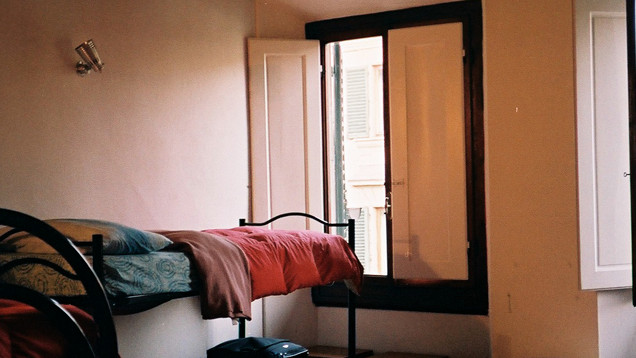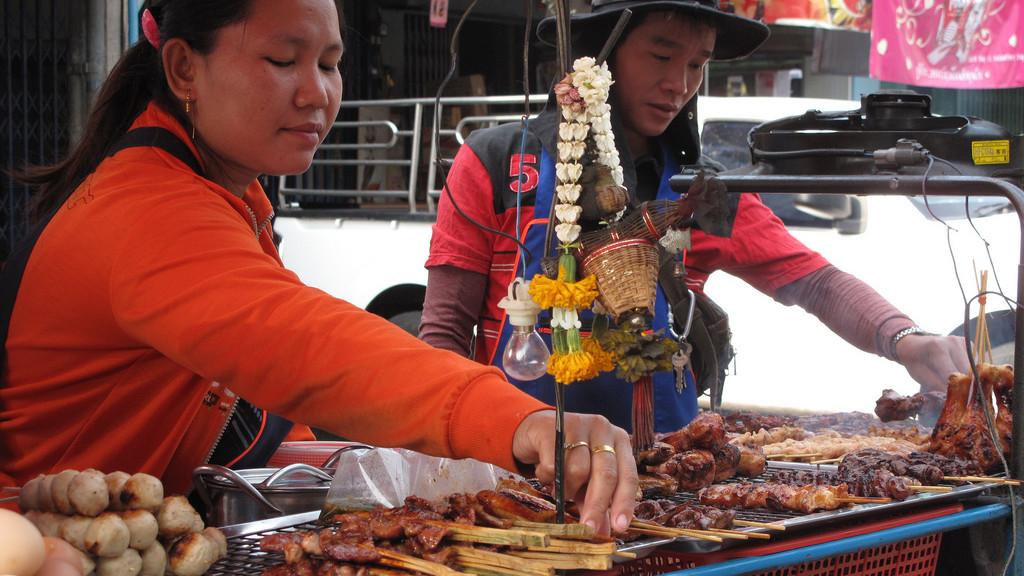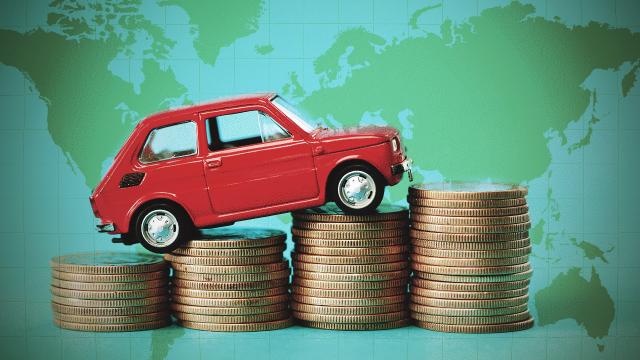Spending a lot of money on holidays doesn’t mean you will have a better time than someone who spends less. I’ve been travelling the world for close to a decade on a budget and found that following a few simple tips makes it easy to travel on a budget and still have an amazing trip.
Saving money on the road requires us to break away from a conventional mindset that travel is expensive. This mindset is pushed by a travel industry built on people spending more money, that tells us that we need to stay in hotels, eat at world-class restaurants, or go on packaged tours to have a good time. Of course, that’s just not the case, and there are plenty of ways to have a good tripwithout spending a fortune.
Below are various ways to save in any destination around the world — from cheaper locales like Thailand to more expensive countries like Norway. They will save you big money with minimal effort. I’ve traveled to over 75 countries in the last eight years. I even wrote a book on budget travel called How to Travel the World on $50 a Day. I know how unbelievable it can sound to say you can travel the world on a budget comfortably, but I know it’s possible because I’ve done it firsthand. Below are some of the best ways to save money in any destination because when you spend less, you can travel more.
Affordable Alternatives To Hotels

When you don’t need a luxury suite, there are a variety of options for finding housing that won’t cost you much. Whether you work in exchange for room and board or simply find a cheap hostel, here are a few alternatives to hotels.
Use A Hospitality Exchange
The best way to save on accommodation is not paying for it — and a hospitality exchange allows you to do exactly that. You’ve probably heard of “couch surfing”, but there are more options than that. Hospitality exchange services connect travellers with locals offering a free place to stay. Sometimes it’s a bed, sometimes it’s a couch, and sometimes it’s literally just space on the floor. These sites work by having users sign up, create profiles, and connect with each other. The expectation is that one day, those who were hosted will pay it forward and host someone else. You’re not required to host anyone in the future, but most people find the experience of being hosted rewarding and do host others. There are four major hospitality exchange organisations:
Do Farm Work In Exchange For Room And Board
World Wide Opportunities on Organic Farms, or WWOOFing, matches people looking for work on farms with farms that need labour. You get free room and board in exchange for work! It’s an incredible way to stay in one area for free. You don’t need any farm experience either. There is no international WWOOF membership, so you’ll have to buy a membership from each individual WWOOFing country’s organisation. Annual membership usually costs around $US30 per country. Obviously this solution isn’t for everyone and is limited to certain areas, but it can be a good way to gain interesting experience while saving money.
Try House Sitting For Long Term Stays
House sitting is exactly like it sounds — while someone else is on holiday, you watch their house and take care of any pets they have while they are gone. House sitting commitments tend to be long term (i.e. a month or more) and are suited for travellers who want to stay longer in one specific place. The biggest house sitting websites are:
Stay In Hostels
Perhaps the most common solution for travellers looking to save money, hostels are one of the cheapest forms of paid accommodation in the world. Hostels are places that offer shared (and sometimes private) rooms for travellers looking for a cheap place to stay. These dormitory-style rooms usually have between four and 20 beds. The more beds, the cheaper the room.
Hostel prices are about a third of the cost of a hotel room. A cheap hotel in New York City is $US100 USD, while a dorm room is $US30. In Thailand, where a hotel is $US30 USD or more, you can get a cheap dorm room for $US5. In Australia, a dorm room is $US25 USD versus $US110 for a hotel.
Use Serviced Apartments
One option for group travellers, or even people travelling alone who aren’t interested in hostels, is serviced apartments. These are apartments owned, furnished, and taken care of by someone else that you rent like a hotel room. People list an extra room, couch, or property they own and want to make money from. It’s like couch-surfing, except you pay for it and get your own space. There are many companies that will help you find these apartments around the world, such as:
Saving Money On Food And Drink

Food can be one of the most substantial daily expenses on your trip, especially if you only stay in the areas frequented by tourists. Instead, venture out to either do some grocery shopping of your own and cook for yourself, or explore locale establishments that don’t necessarily cater to tourists.
Cook Your Own Meals
A week’s worth of groceries is cheaper than a week’s worth of restaurants. I generally find that I spend about $50-$60 per week on groceries, as opposed to $20+ per day at restaurants. That’s a reduction of 70% in food expenses. Even if you are going away for just a two-week vacation, consider cooking some of your meals. Food costs add up quickly — a snack here and a dinner there and you’ll be wasting a lot of your money on food. The majority of hostels, guesthouses, and shared apartments all have full kitchens where you can cook your meals. (They provide the pots, pans and utensils too!) Even if you are staying at a hotel without a kitchen, you can still prepare your own food by making sandwiches. I recommend trying to stay in a place with kitchen facilities, however, so you can cook some hot meals and reduce your expenses.
Eat Lunch Specials
In many parts of the world, especially in Europe, you can dine on dinner menus at lunch special prices. This so-called plate of the day is one of the best bargains in the world. For example, while I was in Barcelona, I went to eat at the seafood restaurants near the beach. Dinner was around $US50. Coming back the next day for the lunch special, however, allowed me to get the same meal for only $US20. Singapore is another great destination for lunch specials. While the city is very expensive by Asian standards — food here can cost as much as it does back home — restaurants here have fixed menus for lunch that cost between $US10-15, as opposed to $US25 for dinner. In England, pubs provide set meals for as low as $US10.
Carry A Reusable Water Bottle
You need to stay hydrated when travelling and buying water every day gets expensive. Get a metal water bottle or reuse your plastic water bottle a few times to save money. I usually use a plastic water bottle for about four days, or more if I can find a place to clean it. Instead of buying three bottles a day, I usually buy two per week. I may only be saving a small amount of money each time, but over the course of a long trip that can really add up. Moreover, I reduce the amount of plastic I use, which is also good for the environment. It’s win-win.
If the tap water in your part of the world is not drinkable, you can use a Steripen to purify your water, save money, and reduce your use of plastic bottles.
Never Eat In A Tourist Area
This tip is simple enough, but one people often forget since it’s easier to eat near the attractions. Prices in tourist areas generally tend to be 20-50% higher because tourists usually don’t mind spending more money on holiday and tend to be unaware of what local prices actually are.
Walk away, go explore some side streets, and find a place where you don’t hear much English. It’s more challenging and more work, but the food is a lot better and you’ll be paying the local price instead of the tourist price. While in Barcelona, my friends and I wandered away from the touristy La Rambla and found a local tapas restaurant. We filled our stomachs for $US12 each in what would have cost double that on La Rambla, where a single dish can be $US20.
Not comfortable just winging it? To find local favourites, ask hotels or hostels, or look on Yelp, Foursqaure, or Openrice.
Transportation And Entertainment

No, you don’t really need to hire a private car to get around, and you’ll likely miss out on a lot of the local culture if you do. When possible, think like a local and explore the city via public transit — or literally join the locals with ride sharing services — while taking advantage of tourist-focused passes that can offer admission to multiple museums and more.
Take Local Transport
Forget the private coaches, taxis, and tourist buses — do what the locals do and take local buses or trains. It may be easier to get in that tourist bus since companies will pick you up from your hotel or hostel and take care of any logistics for you, but it’s more fun and much cheaper to figure out the local transportation system. Even in expensive countries like Norway or Sweden, the city train is never more than $US4. It may take some time to figure out the map and where you need to go, but learning your way around is half the fun of travelling.
And even if I don’t speak the local language, the signs and timetables at the bus stop usually have a price listed. If the price isn’t listed, I’ve never found a bus driver who doesn’t understand, “How much?” or at least the confused look on my face while holding a bill out in front of me!
Get Tourism Cards
I will never figure out why travellers don’t use tourism cards more often. Local tourism offices (think London Tourism, Paris Tourism, New York Tourism, etc.) issue cards for many of their attractions, tours, and restaurants. These cards (which you will pay a one-time fee for) give you free entry and substantial discounts on many of the attractions and tours in a city, free local public transportation (a huge plus), and discounts at a few restaurants and shopping malls. The cards are typically valid for 1, 3, 5, or 7 days. The first day begins when you first use your card, whether at a museum or on public transportation.
These cards are great for saving money because you get free transportation around the city and free entry into museums, attractions, and tours. For example, in Oslo, Norway, the VisitOslo card offered by the city tourism board costs $US60. However, each museum in the city is between $US12-15. I saw nine museums in the city on my last visit. I saved $US30 with the pass and got free public transportation. When I used the Paris Museum Pass while visiting Paris, I saved $US85 off the normal price of the museums.
One important thing to remember is that while these cards offer great value, the timed nature of them requires you to hustle to get as much value out of them as you can.
Take Advantage Of Free Museum Days
Most museums have special discount times or free nights. Even famous museums like the Louvre and the Guggenheim offer occasional free entrance. If I don’t have a tourism card that offers free entrance into the museum I want, I scan its website to find out which days and times the museum offers free entrance. Before you go anywhere, make sure you check websites to find out if the museums you want to see offer free visiting hours.
Ask Hostels for Information
You can use hostels for information even if you aren’t staying in them. They deal with budget travellers on a day-to-day basis and know the ins and outs of visiting that city on a budget. Go in and ask them for advice on what to see and do on the cheap. They will always be helpful.
Utilise Local Ride-Sharing Services
Trains, planes, buses — these can be expensive. An easier and more interesting way to travel is by getting a ride with a local heading in your direction. All you have to do is share the cost of fuel. It’s cheaper, you get to meet a local, and you can take detours and pit stops if you want. Some recommended websites include:
- Liftshare (based in the UK)
- Mitfahrgelegenheit (Germany)
- Gumtree (UK/Australia/NZ)
- Kangaride (Canada)
- BlaBlaCar (Europe)
Other Sharing Economy Websites
The sharing economy exploded in 2014 and has given travellers direct access to locals who can act as tour guides, hosts, cooks and drivers. Take advantage of these services to bypass traditional travel companies and save money. Some companies worth using are:
These tips are good for any destination in the world. No matter where you go in the world, there are always ways to save. The travel media tells us that travel is expensive but years of experience has taught me otherwise. I’ve written a book called How to Travel the World on $50 a Day and am currently driving across the country on a book tour because I know the tips above and the tips in my book work. Break out of the hotel/resort mindset, use the tips above, and save big.
Matthew Kepnes runs the award winning budget travel website Nomadic Matt and is the author of the new book, How to Travel the World on $50 a Day. His tips and expertise has appeared in Wall Street Journal, CNN, National Geographic, BBC, Time, The Guardian, and The New York Times.
Image adapted from Zsolt Biczo (Shutterstock). Additional images by Monica Kelly, nist6dh, and David Brossard (Flickr).

Comments